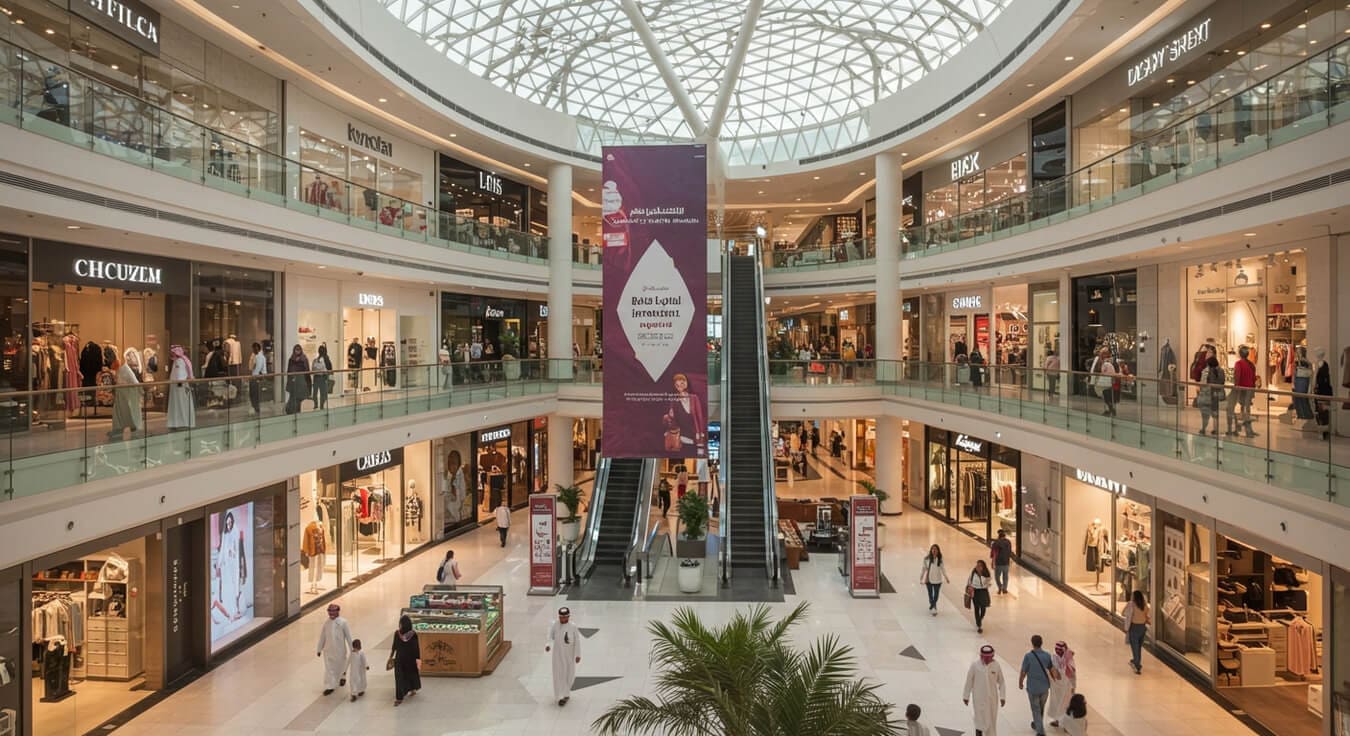Retail Investment in Saudi Arabia
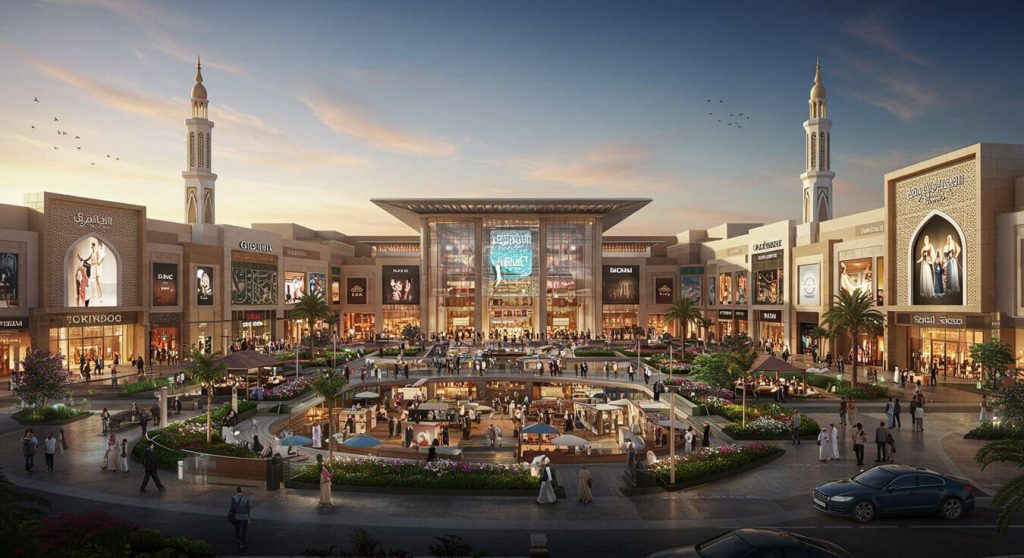
Saudi Arabia – yes, that Saudi Arabia – is experiencing the most explosive retail boom of the 21st century.
… And almost nobody is paying attention.
While you’ve been distracted by tech bubbles and drama, the desert kingdom has quietly become the most lucrative retail market on the planet. Not gradually. Not steadily.
Table of Contents
✅ Listen to this PODCAST EPISODE here:
Retail Investment in Saudi Arabia: The Growth
Economic Drivers: Vision 2030 and the Trillion-Dollar Bet
Vision 2030 is Saudi Arabia betting the entire kingdom on a post-oil future, with retail as a cornerstone of that transformation.
When Crown Prince Mohammed bin Salman announced expanded entertainment options in 2019, retail sales in corresponding categories didn’t just grow – they exploded by 28% within six months.
Think I’m exaggerating?
The $20 billion Diriyah Gate development wasn’t on anyone’s radar five years ago. Today? It’s rising from the desert with 100+ retail spaces pre-leased at rates that make Manhattan look affordable – 32% above initial projections.
Changing Consumer Habits: The Perfect Demographic Storm
Here’s the demographic reality that changes everything: 67% of Saudis are under 35.
Let that sink in.
Two-thirds of the population. Under thirty-five. With rising disposable income. In a country where shopping is now the primary social activity.
Saudi consumers aren’t just spending more – they’re fundamentally changing HOW they spend. These aren’t just shoppers – they’re digital natives with brand obsession that makes American consumers look positively restrained.
The numbers tell a story so compelling it borders on fiction:
- E-commerce grew 60% in a single year
- Mobile shopping accounts for 76% of online transactions
- Luxury brand spending jumped 35% year-over-year
- Social commerce is growing at a mind-bending 79% annually
When Noon.com launched their Saudi operations, something incredible happened. They hit sales volumes in 90 days that took 18 months to reach in neighboring markets. Their average basket size wasn’t just higher than projected – it was 41% higher.
Key Retail Investment Opportunities in Saudi Arabia
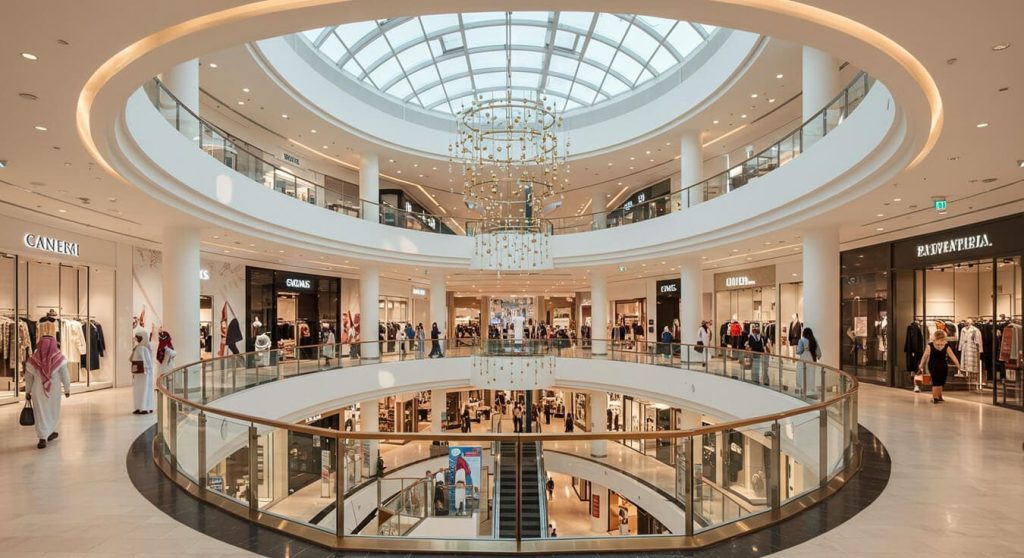
Not all retail segments are created equal in this gold rush. Knowing where to place your bets is everything.
E-commerce: The Digital Explosion
Saudi Arabia is skipping entire developmental stages that took decades in Western markets. So, the real opportunity is the entire ecosystem:
- Payment processing that works with Saudi banking systems
- Last-mile delivery in a country with no standardized addressing
- Online-to-offline integration that respects cultural shopping patterns
- Social selling platforms that leverage the Kingdom’s world-leading social media usage
Luxury and Premium Brands: The Repatriation of Wealth
Here’s the dirty secret about Saudi luxury retail: the Kingdom has been massively underserved despite having one of the world’s highest concentrations of ultra-high-net-worth individuals.
For decades, Saudi luxury shoppers boarded planes to Dubai, London, or Paris because local options were non-existent. That’s changing at breathtaking speed.
Franchise Opportunities: The Turnkey Wealth Machine
Franchising in Saudi Arabia is becoming the fastest route to retail profitability in the Kingdom.
International brands using franchise partnerships are achieving break-even 40% faster than regional averages. The capital efficiency is nothing short of extraordinary:
- F&B franchises averaging 24% ROI in the first three years
- Retail concept franchises hitting 19% ROI with significantly lower capital requirements
- Master franchise agreements generating both operational profits and sub-franchising fees
Franchise partners with proven operational excellence aren’t just participating in the Saudi retail boom – they’re capturing disproportionate value by solving the market entry puzzle for global brands desperate to establish Saudi presence.
Mall Development: Reinventing Retail Environments
The Kingdom is developing retail destinations that make traditional shopping centers look like relics from another era:
- Mall of Saudi ($4.3 billion development) with indoor snow slopes alongside 300+ retail outlets
- Bujairi Terrace in Diriyah blending 300-year-old architecture with ultra-luxury shopping
- Jeddah Waterfront transforming the shoreline into an integrated retail and recreation district
Consumer Goods and F&B: The Social Revolution
Five years ago, unmarried men and women couldn’t even sit together in a restaurant. Today? Mixed-gender dining is standard, creating demand for restaurant concepts that literally couldn’t have existed before.
The numbers tell the story:
- F&B sector growing at 12% annually despite global headwinds
- Cloud kitchen concepts achieving profitability in 60-90 days
- Quick-service restaurants seeing average tickets 24% higher than regional norms
The opportunity extends far beyond traditional restaurants to specialty food retail, subscription services, and experience-driven concepts that blur the line beween dining and entertainment.
The Impact of Vision 2030 on Retail Investment in Saudi Arabia
Vision 2030 is reshaping Saudi Arabia through billions in direct investment, policy reform, and social transformation.
Government Policies: The Rules Have Changed
The Saudi government has implemented policies that encourage retail growth:
- 100% foreign ownership now permitted in most retail categories
- Licensing processes compressed from months to weeks
- E-commerce incentives including subsidized shipping and payment processing
- Retail-focused economic cities with tax advantages and reduced regulation
Retail investment in Saudi Arabia benefits from government backing that simultaneously creates supply-side advantages and stimulates consumer demand.
When the government introduced the Qiddiya entertainment district, they didn’t just announce it – they committed $8 billion to ensure its success, creating immediate retail opportunities in surrounding areas. Property values increased 43% within 18 months.
Tourism Growth: Building an Industry From Zero
The Kingdom is aiming for 100 million annual visitors by 2030, creating retail demand that requires entirely new supply:
- Airport retail expanding 300% by square footage
- Hotel retail concepts creating turnkey shopping for international visitors
- Duty-free zones in development at key entry points
Top Cities for Retail Investment in Saudi Arabia
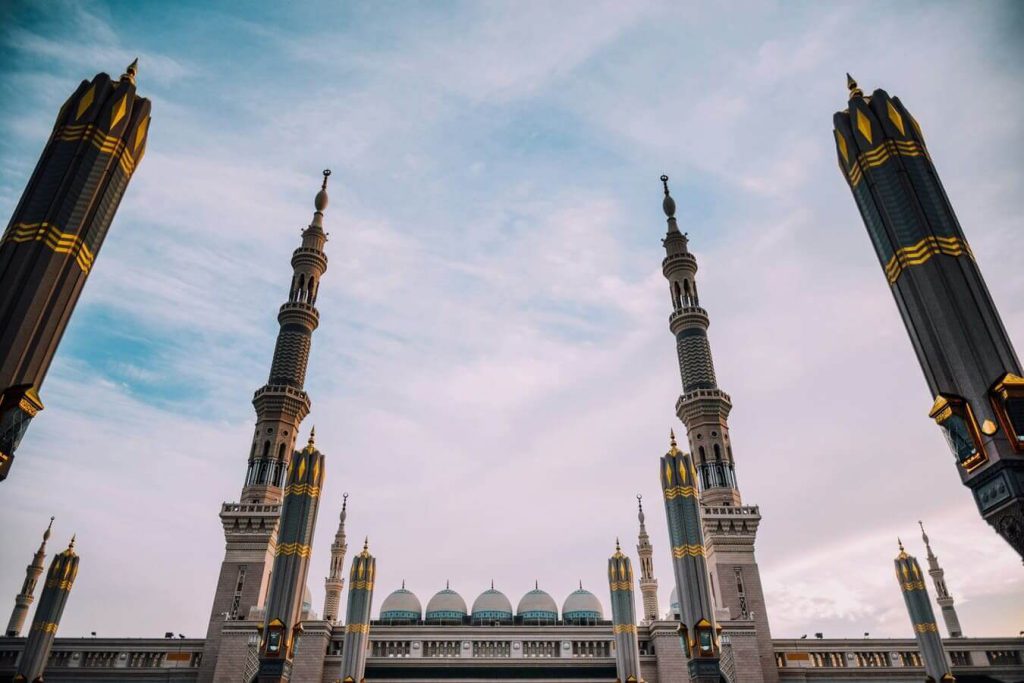
The Kingdom isn’t one retail market – it’s multiple distinct markets with dramatically different dynamics.
Riyadh: The Capital Transformation
The Riyadh Strategy 2030 has allocated $18 billion specifically to retail and commercial development:
- 40+ major retail developments under construction simultaneously
- Historical districts being revitalized with boutique concepts
- Suburban retail corridors emerging to serve residential expansion
Jeddah: The Gateway City
Saudi Arabia’s most liberal city offers retail dynamics unlike anywhere else in the Kingdom such as stronger international influence due to its role as the Red Sea gateway, more developed shopping culture with multi-generational retail history, and higher percentage of non-Saudi consumers influencing retail mix
Dammam and Khobar: The Hidden Opportunity
The Eastern Province offers retail economics that often outperform the higher-profile western cities:
- Strong expatriate population driving diverse retail demand
- Oil sector wealth creating luxury opportunities at value pricing
- Proximity to Bahrain creating weekend shopping patterns unique to the region
The Role of Technology in Retail Investment in Saudi Arabia
Digital Transformation: The Leapfrog Effect
Saudi retailers are adopting technology to leapfrog development stages that took decades elsewhere. That’s not incremental improvement – it’s fundamental business transformation.
Fintech and Retail Payments: The Transaction Revolution
Payment technology in Saudi retail is creating entirely new business models:
- Mobile wallet adoption growing at 87% annually
- Loyalty programs integrated with payment platforms driving 23% higher repeat purchase rates
The future of Saudi retail payments extends beyond transaction processing to create financial ecosystems capturing value throughout the entire customer journey.
Risks and Challenges of Retail Investment in Saudi Arabia
Let’s be brutally honest about the risks, because they’re real and significant.
Economic and Market Risks: The Oil Factor
The Saudi retail market faces specific challenges investors must navigate:
- Oil price sensitivity still influencing consumer confidence
- Regional geopolitical tensions creating periodic volatility
- Rapid development potentially creating oversupply in specific categories
When oil prices declined significantly in 2020, luxury retail sales didn’t just dip – they dropped 22% before recovering. This highlights the market’s continued sensitivity to hydrocarbon economics despite diversification efforts.
Smart investors build these variables into their financial models rather than assuming straight-line growth.
Competition: The Crowded Gold Rush
Saudi retail competition is becoming sophisticated at an ,unprecedented speed. International brands are entering with global resources and capabilities and e-commerce is creating price transparency and margin pressure
The days of easy wins simply by showing up are over. Differentiation beyond selection and price is becoming essential for sustainable success.
Future Outlook for Retail Investment in Saudi Arabia
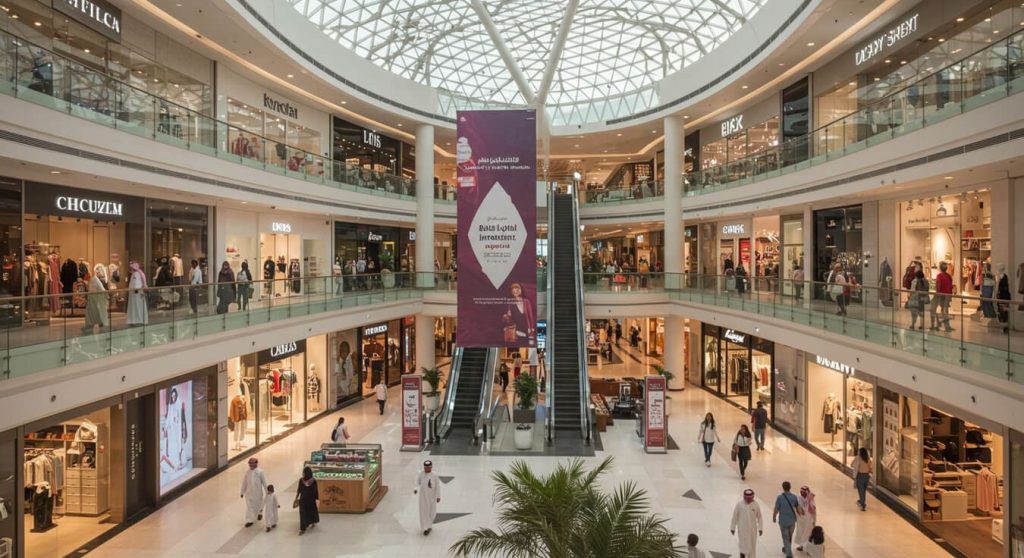
The trajectory points toward continued expansion but with increasing sophistication and competitive intensity.
Retail Trends to Watch: Experience Economy Takes Center Stage
Several emerging trends will shape the next retail wave:
- Experiential retail focusing on activities rather than transactions
- Sustainable concepts responding to growing environmental awareness
- Hyper-personalization enabled by AI and customer data integration
Long-Term Investment Strategy: Platform Thinking
Successful long-term retail investment in Saudi Arabia requires strategic positioning beyond opportunistic store openings:
- Building retail platforms rather than individual locations
- Developing proprietary customer data assets with compounding value
- Creating operational expertise specifically tailored to Saudi dynamics
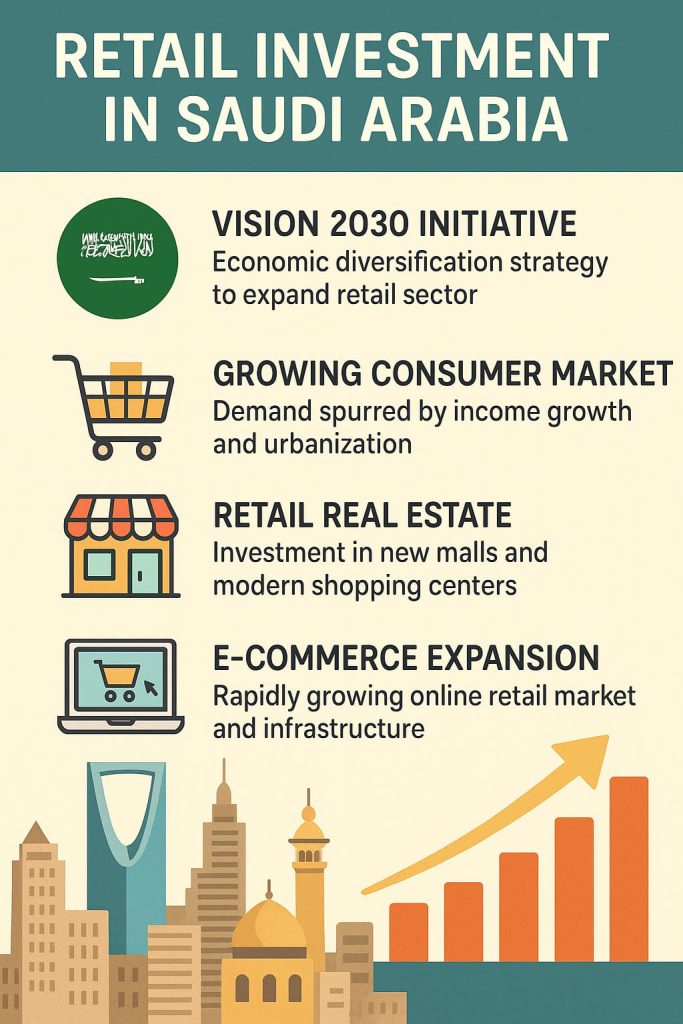
Key Insights: Retail Investment in Saudi Arabia
Let me save you thousands in consulting fees with these essential takeaways:
✅ Retail investment in Saudi Arabia represents one of the most explosive growth opportunities in global retail, with the market projected to hit $158 billion by 2025
✅ Vision 2030 isn’t just policy – it’s $3.2 trillion in committed investment creating both structural reforms and direct market intervention
✅ E-commerce is growing at 60%+ annually, creating opportunities throughout the digital ecosystem while traditional retail evolves rather than dies
✅ Physical retail isn’t disappearing – it’s transforming toward experience-driven environments integrating shopping, entertainment, and social interaction
✅ Government backing provides unprecedented support while simultaneously stimulating consumer demand through economic and social liberalization
✅ The most attractive segments include luxury retail, technology-enabled concepts, and tourism-focused developments
✅ Saudi cities are developing distinct retail profiles with different risk-return characteristics
✅ Technology adoption is accelerating, creating both efficiency opportunities and entirely new business models
What Makes SIS International Your Essential Guide to Saudi Retail
This market doesn’t play by conventional rules. You need advisors who’ve gotten their boots dusty in actual Saudi malls, who’ve negotiated with landlords face-to-face, who understand the cultural nuances that make or break retail concepts.
Here’s why serious investors partner with SIS 国际:
- CUSTOMIZED APPROACH: Most consultants offer standardized market overviews that barely scratch the surface. SIS develops research specifically for your retail concept, whether you’re launching luxury boutiques in Riyadh or mass-market franchises in secondary cities.
- THE 40+ YEARS OF EXPERIENCE: SIS has been helping businesses succeed in markets others found too complex. This historical perspective proves invaluable when interpreting Saudi Arabia’s retail transformation. While others are reacting to headlines, we’re connecting dots based on decades of observation.
- THE GLOBAL DATABASES FOR THE RECRUITMENT: Our access to 1.5 million+ research participants worldwide, including Saudi retail decision-makers, mall developers, and consumer panels, delivers insights you simply can’t find in published reports.
- PROJECTS GET DONE FAST: In Saudi’s fast-evolving retail landscape, timing is everything. While traditional consultants take months to deliver reports, SIS provides actionable intelligence in weeks, giving you the first-mover advantage that often determines success. While others are still analyzing, you’re executing.
- AFFORDABLE RESEARCH: Premium intelligence shouldn’t require investment-killing fees. SIS offers tiered service options making professional research accessible whether you’re an independent retailer or a global brand.
- LOCAL EXPERTISE: Our team includes Saudi nationals and regional specialists who understand the cultural nuances and consumer preferences critical to retail success.
- PROVEN TRACK RECORD: SIS has guided multiple retail ventures to successful launches across the Middle East. Clients implementing our recommendations report 35-45% higher success rates compared to those relying on generalized market reports or going it alone.
Frequently Asked Questions About Retail Investment in Saudi Arabia
How has Saudi Arabia’s retail market changed in recent years?
Five years ago, men and women couldn’t shop together in many Saudi malls. Today? Mixed shopping is the norm.
That’s just one example of the revolutionary changes reshaping Saudi retail. Previously characterized by conservative social policies and restricted foreign investment, the market has transformed through Vision 2030 reforms.
Entertainment retail that was literally illegal – cinemas, concert venues, mixed-gender cafes – now drives mall traffic. E-commerce has exploded from 5% to 18% of total retail in just 36 months. Foreign ownership restrictions have been relaxed, enabling international retailers to establish operations without local partners.
What types of retail investments are currently most attractive in Saudi Arabia?
Luxury retail is benefiting from both increasing local consumption and repatriation of spending previously directed overseas. Experience-driven environments combining shopping with entertainment and dining are achieving both premium leasing rates and higher consumer spending.
Omnichannel models that seamlessly integrate digital and physical journeys are outperforming single-channel approaches by every metric. For investors seeking stable yields, grocery-anchored developments in residential areas provide consistent returns with lower volatility.
Are there specific incentives for foreign investors in retail?
The incentives for foreign retail investors have evolved from virtually non-existent to potentially game-changing.
Most retail categories now permit 100% foreign ownership, eliminating the historical requirement for local partners. The Ministry of Investment provides expedited licensing through a dedicated retail pathway, reducing setup times from months to weeks.
In specific development zones, retailers can access subsidized leasing rates, tax incentives, and simplified compliance. E-commerce operations benefit from ecosystem support including payment infrastructure and logistics partnerships.
What are the main challenges for foreign retail investors in Saudi Arabia?
While opportunities are extraordinary, foreign retailers face significant challenges requiring specialized approaches.
Cultural and consumer preference differences demand nuanced understanding of local dynamics, particularly regarding product selection, marketing, and operations. The regulatory environment continues evolving rapidly, creating compliance complexities in everything from signage to staffing.
The Saudization program mandates specific levels of Saudi employment, presenting workforce development challenges in specialized retail categories. Competition is intensifying as both international brands and sophisticated local retailers target high-potential segments.
How does Saudi Arabia’s retail market differ from other Gulf countries?
Saudi Arabia’s retail market differs fundamentally from neighbors like UAE and Qatar in ways that render generic “Gulf expertise” insufficient.
The sheer scale of Saudi Arabia (population 35+ million versus UAE’s 10 million) creates demographic advantages smaller Gulf states cannot match. While Dubai built retail environments primarily for tourists and expatriates, Saudi development increasingly focuses on the massive domestic market.
Saudi Arabia’s retail sector is earlier in its development cycle, creating higher growth potential but also greater operational complexities. Perhaps most significantly, Saudi retail is evolving alongside broader social liberalization, creating categories and concepts that simply didn’t exist previously.
What’s the typical timeline for retail concept development in Saudi Arabia?
Shopping mall developments typically require 36-48 months from concept to opening, though government-prioritized projects have achieved faster timelines through expedited approvals. Individual store concepts in existing developments can move from lease signing to opening in 6-9 months, with luxury formats generally requiring longer buildout periods.
E-commerce operations can launch within 2-3 months for basic functionality, though fully localized platforms with integrated logistics typically require 6-12 months to achieve operational stability. The most time-consuming element is typically securing necessary approvals and permits, though this process has been significantly streamlined through digital government services.
How is technology changing retail investment opportunities in Saudi Arabia?
The Ministry of Communications and Information Technology’s digitization initiatives have created infrastructure allowing retailers to implement advanced technologies more easily than in markets with legacy constraints. Data analytics capabilities are creating competitive advantages for retailers who can harness customer insights for personalization and operational optimization.
Payment technology is evolving beyond transaction processing to create financial ecosystems capturing value throughout the customer journey. Immersive technologies like augmented and virtual reality are transforming product visualization, particularly in categories like home furnishings and cosmetics.
我们的纽约工厂地址
纽约州纽约市东22街11号2楼 10010 电话:+1(212) 505-6805
关于 SIS 国际
SIS 国际 提供定量、定性和战略研究。我们提供决策所需的数据、工具、战略、报告和见解。我们还进行访谈、调查、焦点小组和其他市场研究方法和途径。 联系我们 为您的下一个市场研究项目提供帮助。

